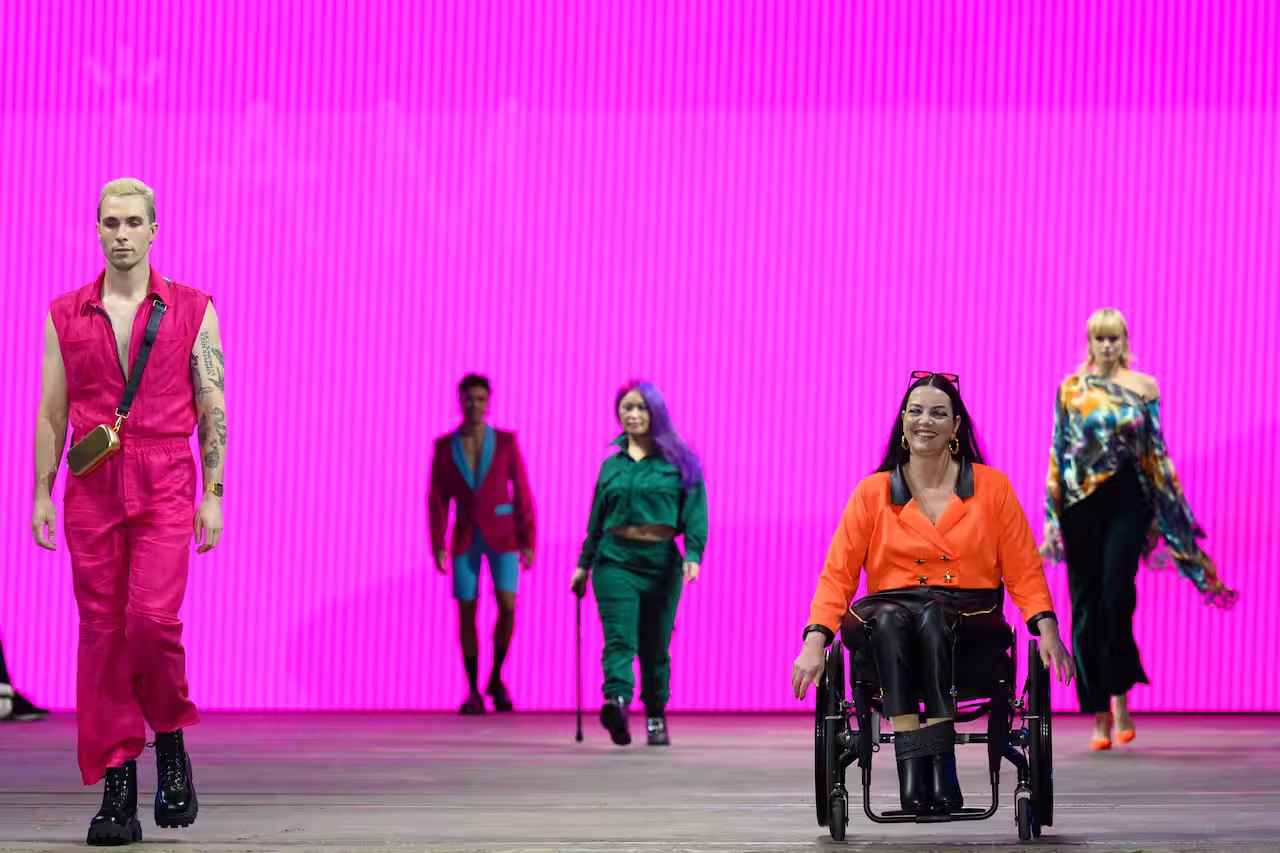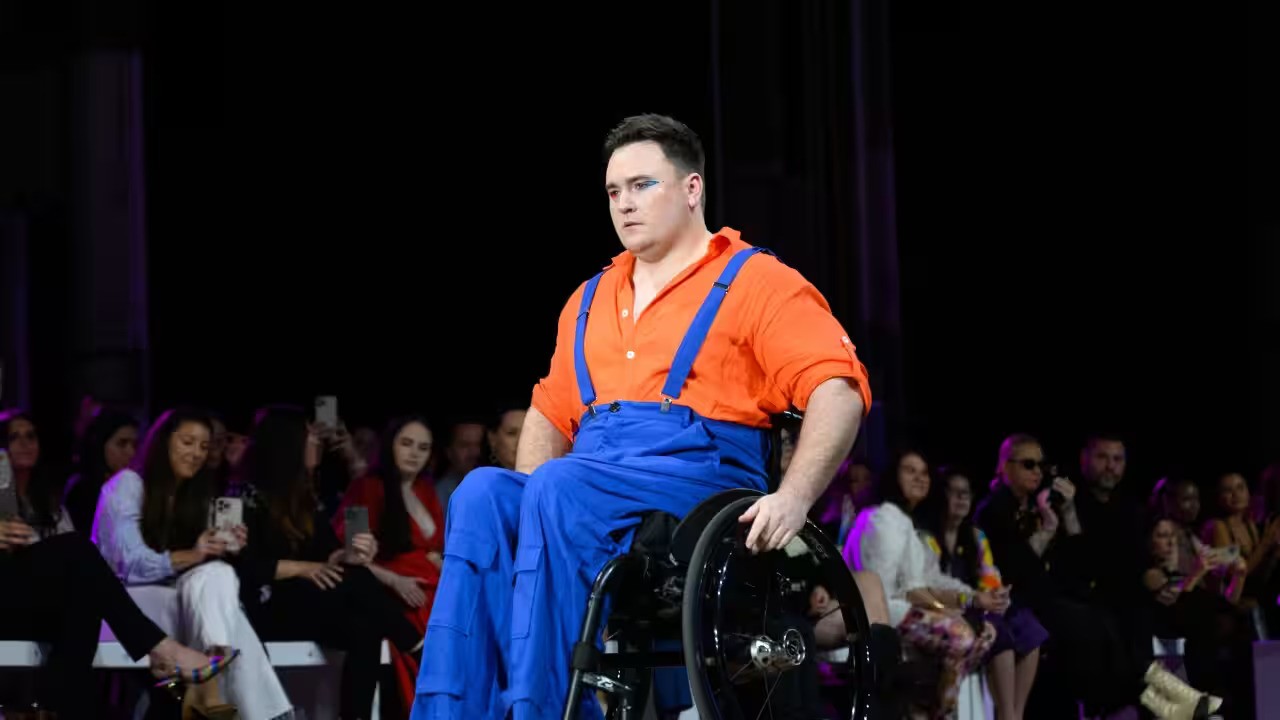Adaptive Fashion For Disabilities - The Evolution Of Adaptive Fashion
In a world where personal style knows no bounds, the realm of fashion has witnessed a transformative shift toward inclusivity through the lens of adaptive fashion for disabilities.
Author:Elisa MuellerReviewer:James PierceFeb 19, 20243.5K Shares59.9K Views

In a world that celebrates diversity, the realm of fashion is gradually embracing inclusivity through a groundbreaking concept: adaptive fashion for disabilities. This innovative approach revolutionizes the way we think about clothing, focusing on creating garments and accessories tailored to the unique needs of individuals with disabilities. Far beyond just aesthetics, adaptive fashion strives to blend style seamlessly with functionality, ensuring that everyone, regardless of their abilities, can confidently express themselves through what they wear.
What Is Adaptive Fashion For Disabilities?
Adaptive fashion for disabilities means designing clothes and accessories with special features to make it easier for people with disabilities to wear and feel comfortable. It considers things like easy-to-use closures, soft fabrics, and designs that accommodate different needs, such as mobility challenges or sensory sensitivities. The goal is to create stylish and functional clothing that helps people with disabilities feel confident and comfortable in their everyday lives.
Importance Of Adaptive Fashion
The significance of adaptive fashion lies in its ability to make clothing more inclusive and comfortable for people with different abilities. Imagine if getting dressed in the morning was a challenge because regular clothes didn't suit your needs. Adaptive fashion steps in to solve this problem by creating clothing that considers the diverse needs of individuals with disabilities.
One crucial aspect is that adaptive fashion promotes independence. For many people with disabilities, traditional clothing might not be easy to put on or take off. Adaptive clothing, on the other hand, is designed with features like easy closures, adjustable elements, and comfortable fabrics, empowering individuals to dress themselves with greater ease.
Moreover, adaptive fashion contributes to boosting self-esteem and confidence. When individuals can express their personal style through clothing that caters to their specific needs, it positively impacts their overall well-being. Feeling comfortable and stylish in what they wear fosters a sense of dignity and inclusion.
Evolution Of Adaptive Fashion
The evolution of adaptive fashion is like a journey where clothing becomes more thoughtful and inclusive for everyone. Over time, people realized that regular clothes weren't always suitable for everyone's needs. This realization sparked the development of adaptive fashion, which focuses on making clothing that works well for people with various abilities.
In the earlier days, adaptive fashion started as a response to the challenges faced by individuals with disabilities. Simple adjustments were made to traditional clothing to make them more accessible. As time went on, designers and innovators began to recognize the importance of not just making clothes that fit differently but also clothes that are stylish and cater to individual preferences.
There's a fascinating history of milestones in adaptive fashion. Designers and brands began incorporating features like easy closures, adjustable elements, and comfortable fabrics into their designs. This evolution made it easier for people with disabilities to dress independently and express their unique styles through their clothing.
In recent years, the fashion industry has witnessed a positive shift. More designers and brands are embracing adaptive fashion, creating collections that cater to a diverse range of abilities. This evolution signifies a growing awareness and acceptance of the fact that fashion should be accessible to everyone, regardless of their physical abilities.
Fashion Challenges For People With Disabilities
People with disabilities often encounter various challenges in the world of fashion, making it important to address these issues for a more inclusive and accessible industry. One primary challenge is the limited availability of adaptive clothing. Many mainstream fashion brands do not consider the diverse needs of individuals with disabilities, resulting in a lack of clothing options that are both stylish and functional.
Another significant hurdle is the fit of standard clothing. People with disabilities may have unique body shapes or requirements due to medical devices, making it difficult to find clothes that accommodate these differences. The one-size-fits-all approach doesn't consider the diverse physical characteristics of individuals with disabilities, leading to discomfort and a lack of choices.
The design of clothing can pose challenges as well. Some individuals with disabilities may face difficulties with buttons, zippers, or other fastenings. Traditional closures can be challenging to manipulate for those with limited dexterity or mobility. This can impede independence and contribute to frustration when dressing.
Key Features Of Adaptive Clothing
Adaptive clothing comes with special features that make it more comfortable and practical for people with diverse needs. One key feature is the design itself. Adaptive clothing is carefully thought out to be easy to put on and take off, addressing the challenges that traditional clothes might pose. It often includes features like larger openings, adjustable closures, and minimal fastenings, making dressing a simpler and more independent process.
Another important aspect is the choice of fabrics. Adaptive clothing is made from materials that prioritize comfort and flexibility. Soft and breathable fabrics are commonly used to provide a pleasant wearing experience. These materials not only feel good against the skin but also allow for easy movement, catering to the varying sensitivities and preferences of individuals with disabilities.
Adaptive Fashion For Disabilities - FAQ
What Disabilities Need Adaptive Clothing?
Seniors with physical disabilities, wheelchair users, elderly with limited mobility and the infirm who may have difficulty dressing without assistance can benefit from adaptive wear.
What Is Adaptive Disability?
Adaptive Behavior
These disabilities express as lacking competence in social, conceptual, and practical skills. Social skills include interpersonal skills, social responsibility, self-esteem, gullibility, naivety, resolution of social problems, and the ability to follow the rules of society and obey the laws.
What Are The Benefits Of Adaptive Fashion?
Adaptive clothing is designed to make the wearer more comfortable. Pants may have a higher rise in the back, more room in the hip and thigh or no back pockets. This makes pants more comfortable while sitting in a wheelchair. People with sensory sensitivities may have texture sensitivity.
Conclusion
In a world where personal style knows no bounds, the realm of fashion has witnessed a transformative shift toward inclusivity through the lens of adaptive fashion for disabilities. This movement, propelled by empathy and innovation, has not only redefined the way we perceive style but has also opened doors to a more accessible and diverse wardrobe landscape.
As designers continue to embrace the principles of adaptive fashion, the runway becomes a stage where everyone, regardless of ability, can showcase their unique flair. By placing comfort and functionality at the forefront, adaptive fashion serves as a beacon of change, fostering a future where clothing transcends barriers and celebrates the beauty of diversity.

Elisa Mueller
Author

James Pierce
Reviewer
Latest Articles
Popular Articles
